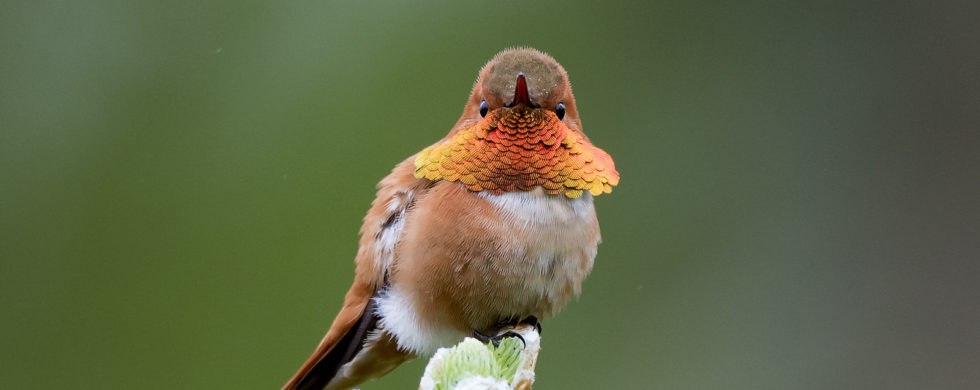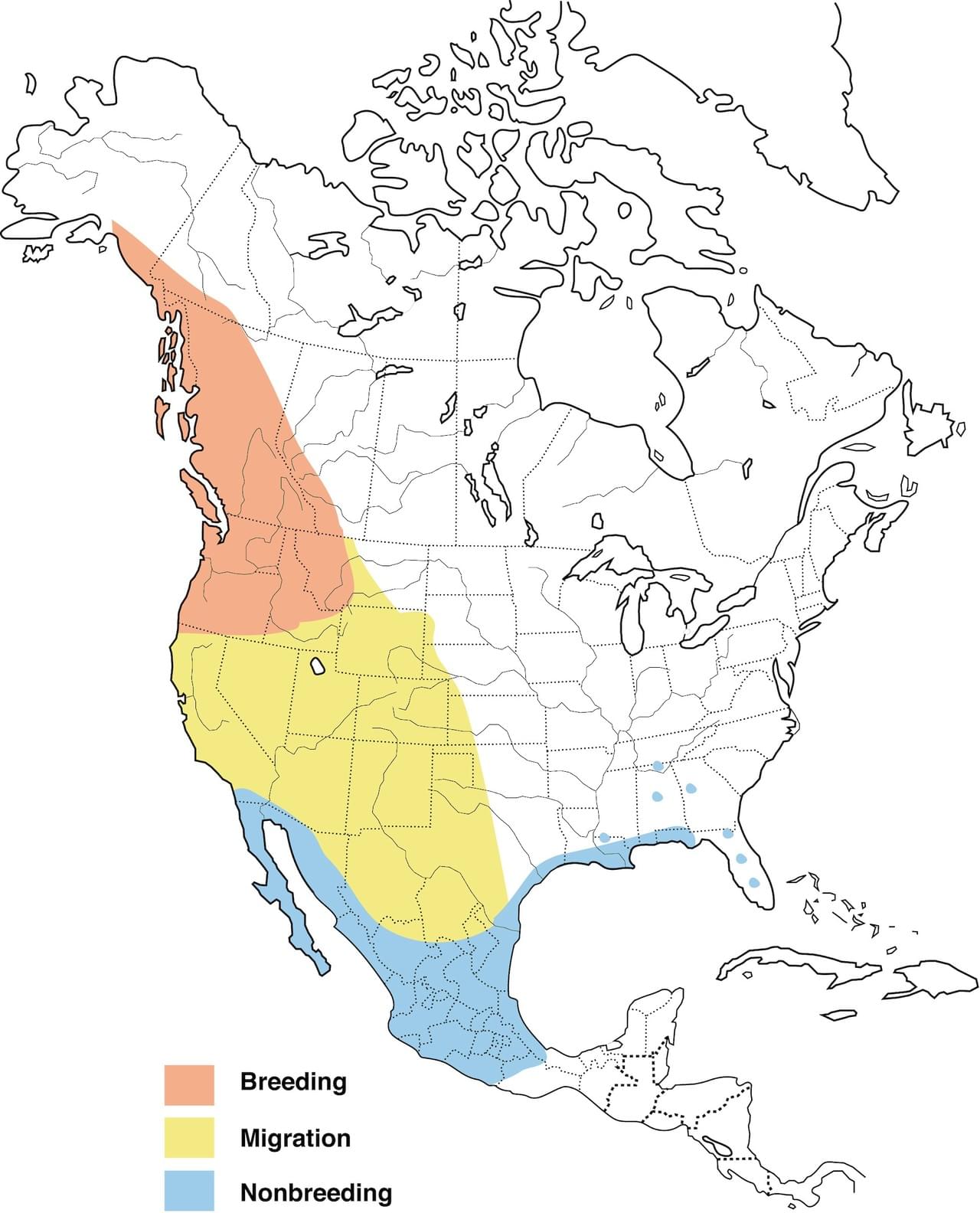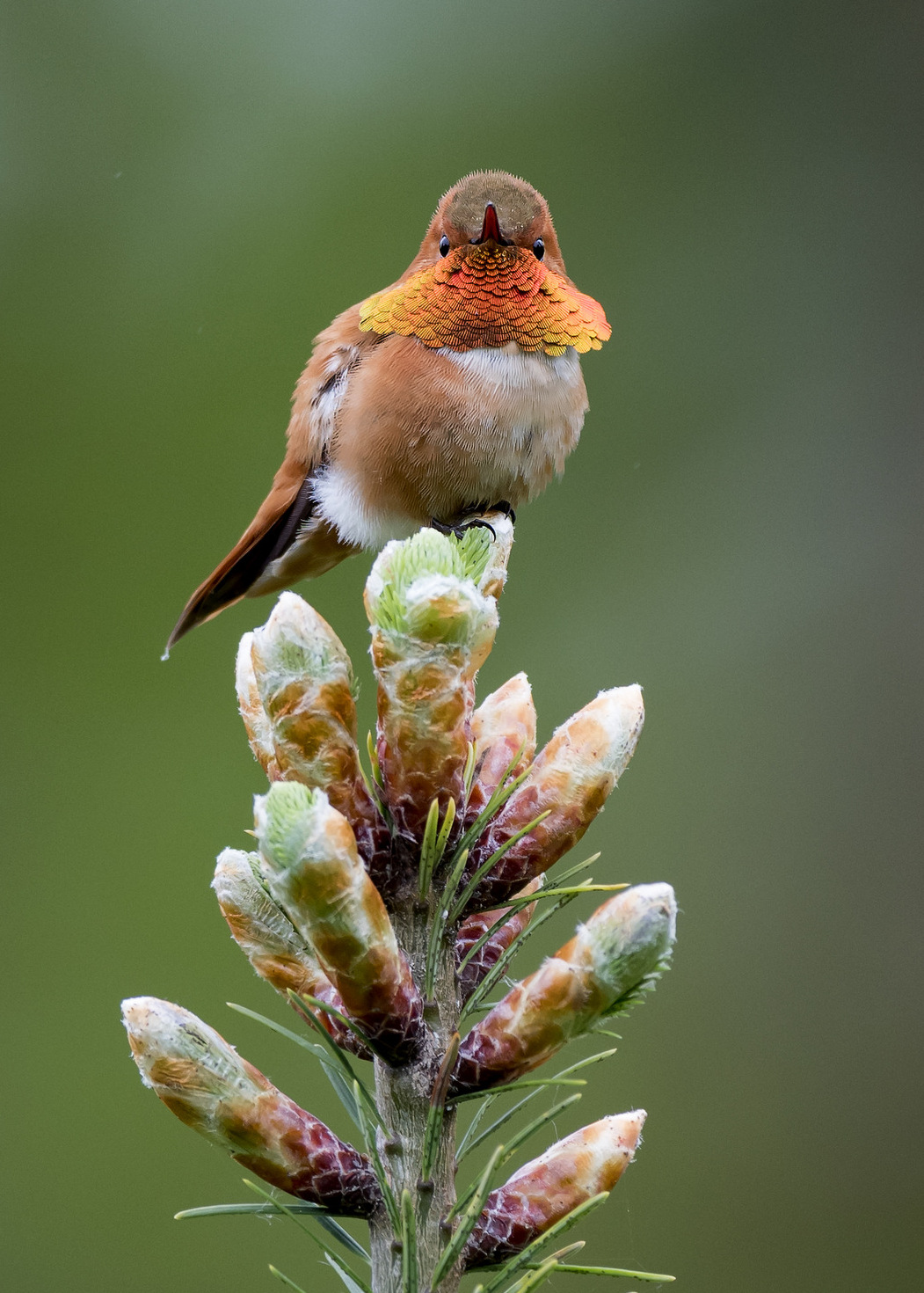
31
2019Rufous-ly Ruthless
Shot of the Month – May 2019
This month we visit with the glorious Selasphorus rufus, aka the Rufous Hummingbird. For those of you who are a bit rusty on your color palette (I was):
Rufous: reddish brown in color.
So while the name is not terribly creative it is accurate. The male Rufous is adorned in reddish brown on the crown, tail and sides. His back can be rufous, green or a bit of both. But the pièce de résistance for the male is that flame-orange gorget. Gor-what? It is a term that refers to the piece of armor that knights wore to protect their throats. It now refers to the patch of color that can be found on a bird or animal. The intense glint of the gorget is the result of iridescence, rather than colored pigments. The bird’s throat feathers contain minutely thin, film-like layers of “platelets,” set like tiles in a mosaic against a darker background. Light waves reflect and refract off the mosaic, creating color in the manner of sun glinting off oily film on water. The color and intensity of the gorget changes depending on your angle of view. (Source) The female Rufous is not nearly as flashy — she typically is greenish above with rusty-washed flanks, rusty patches on her green tail with a spot of orange on her throat. (Source)
In researching the Rufous I was surprised to see how often the word “fiesty” came up. One article said that the bird was “well known to be incredibly feisty and pugnacious.” As far as hummingbirds go the Rufous is considered to be on the small side, usually between 2.8 to 3.5 inches and weighing about 3.5 grams. For comparison a US penny weighs about 2.5 grams! Apparently no one told the Rufous — they are commonly considered the most aggressive of the hummingbird species! As one literary-minded observer noted:
“The male Rufous, glowing like a new copper penny, often defends a patch of flowers in a mountain meadow, vigorously chasing away all intruders (including larger birds).” (Source)
Ever have a Rufous at your backyard hummingbird feeder? Yikes — I can tell you from personal experience that they defend those feeders with equal zeal. They drive off other hummingbirds, bees, wasps, birds and other insects without respite. I had one hover 2 inches from my face trying to scare me off. We eventually set up more feeders around the house to try and give the other hummingbirds a chance at some food.

Rufous Hummingbird Range (Source)
Like other hummingbirds the mainstay of their diet is protein and sugar. They get their sugar by feeding on the nectar from colorful, tubular flowers which they access with their long extendable tongues. Preferred flowers include columbine, scarlet gilla, penstemon, indian paintbrush, mints, lilies, fireweeds, larkspurs, currants, and heaths. The flying pennies get their protein and fat by catching insects like gnats, midges and flies in the air. They will take aphids off of plants also. Given their frenetic lifestyle they consume three times their body weight in food each day. The Rufous has a fantastic memory that helps it find flowers and feeders along its long migration route from previous years. (Source)
Speaking of which, the Rufous hummingbird has the longest migration of any hummingbird — they can fly up to more than 2,000 miles in one direction from the northwest United States down to Mexico and the Gulf Coast where they winter. While the Rufous hummingbird is found predominantly in the western US this far ranging bird has been spotted in every state except Hawaii. These guys get around!!
I can’t help but admire this little bird — the Rufous is a real beauty to behold, is a tremendous athlete, has a sharp mind, and has the fighting spirit of a heavy weight boxer – all rolled up into a thimble-size body!
Until next month…..michael
Nikon D500, Nikon 600mm, f/4, 1/500 sec, ISO 400, -0.333 EV

